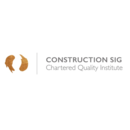Quality tools: fishbone diagram
Contents |
[edit] What is it?
Created by Kaoru Ishikawa in the 1960s, the Fishbone diagram (cause and effect diagram) is a visual tool that shows the potential relationship between a topic (output – effect) and the various factors (inputs – causes) related to it. The diagram resembles the skeleton of a fish as the main causal categories are drawn as ‘bones’ attached to the spine of the fish.
[edit] When and how can I use it?
This tool encourages team participation and is useful in brainstorming. It can be used any time when the cause of a problem is unknown, such as a product defect or issues in the manufacturing or management process. The problem statement and potential categories of causes allow multiple categories of causes to be explored. It can be used as a planning tool to assure that all inputs necessary for a desired outcome have been identified. It can also be used to consider what went right and why during a ‘lessons learned’ exercise at the end of a project.
[edit] Steps
To show the relationships between the cause and effect, and to form a hierarchy of events, the potential causes are arranged based on their level of detail. These are the typical main categories: materials, equipment, people, environment, methods (MEPEM) and sometimes measurement. Facilities, technologies, policies, and practices could be other categories to consider.
1 On the far right side of the diagram write the problem statement. This may be the actual problem or it may be a symptom – at this point you’re not exactly sure and the effect may be refined as more information emerges.
2 Draw a long horizontal arrow pointing to the box. This arrow will serve as the backbone from which further major and minor causes will be categorised and related.
3 Identify potential causes and group them into major categories along the ‘bones’ of the fishbone diagram. Major categories can be established using brainstorming. At this point you shouldn’t be concerned if there is disagreement about whether a category holds the potential cause or not. Just include all of them. Make sure to leave enough space between the major categories on the diagram so that you can add the minor detailed causes.
4 Once you and your team have listed all possible causes you then have the information needed to identify and agree the most likely causes and decide which to investigate further.
[edit] Did you know?
The Fishbone diagram is one of the seven basic quality tools. The Project Management Institute references these seven tools in A Guide to the Project Management Body of Knowledge as an example of a set of general tools useful for planning or controlling project quality.
This article was produced by Jo Dovey and Brian Rutter on behalf of the Chartered Quality Institute and published in Quality World, January 2019.
--ConSIG CWG 18:24, 26 May 2019 (BST)
[edit] Related articles on Designing Buildings Wiki
Featured articles and news
Restoring Great Yarmouth's Winter Gardens
Transforming one of the least sustainable constructions imaginable.
Construction Skills Mission Board launch sector drive
Newly formed government and industry collaboration set strategy for recruiting an additional 100,000 construction workers a year.
New Architects Code comes into effect in September 2025
ARB Architects Code of Conduct and Practice available with ongoing consultation regarding guidance.
Welsh Skills Body (Medr) launches ambitious plan
The new skills body brings together funding and regulation of tertiary education and research for the devolved nation.
Paul Gandy FCIOB announced as next CIOB President
Former Tilbury Douglas CEO takes helm.
UK Infrastructure: A 10 Year Strategy. In brief with reactions
With the National Infrastructure and Service Transformation Authority (NISTA).
Ebenezer Howard: inventor of the garden city. Book review.
The Grenfell Tower fire, eight years on
A time to pause and reflect as Dubai tower block fire reported just before anniversary.
Airtightness Topic Guide BSRIA TG 27/2025
Explaining the basics of airtightness, what it is, why it's important, when it's required and how it's carried out.
Construction contract awards hit lowest point of 2025
Plummeting for second consecutive month, intensifying concerns for housing and infrastructure goals.
Understanding Mental Health in the Built Environment 2025
Examining the state of mental health in construction, shedding light on levels of stress, anxiety and depression.
The benefits of engaging with insulation manufacturers
When considering ground floor constructions.
Lighting Industry endorses Blueprint for Electrification
The Lighting Industry Association fully supports the ECA Blueprint as a timely, urgent call to action.




















